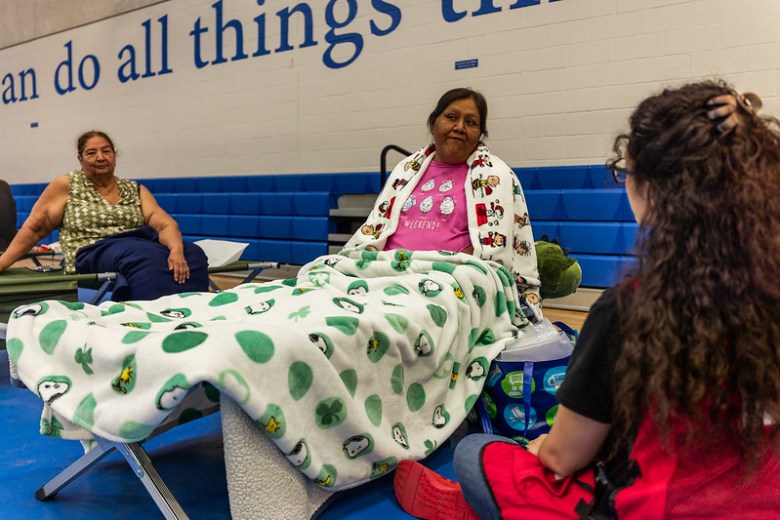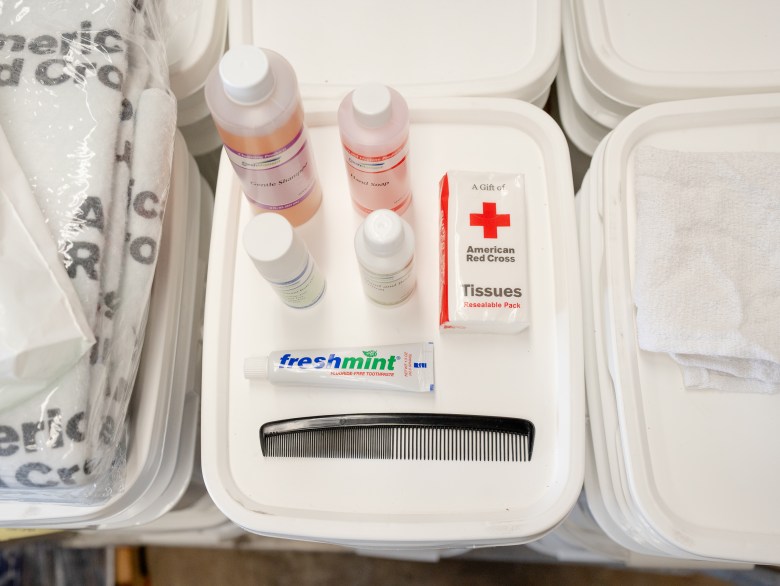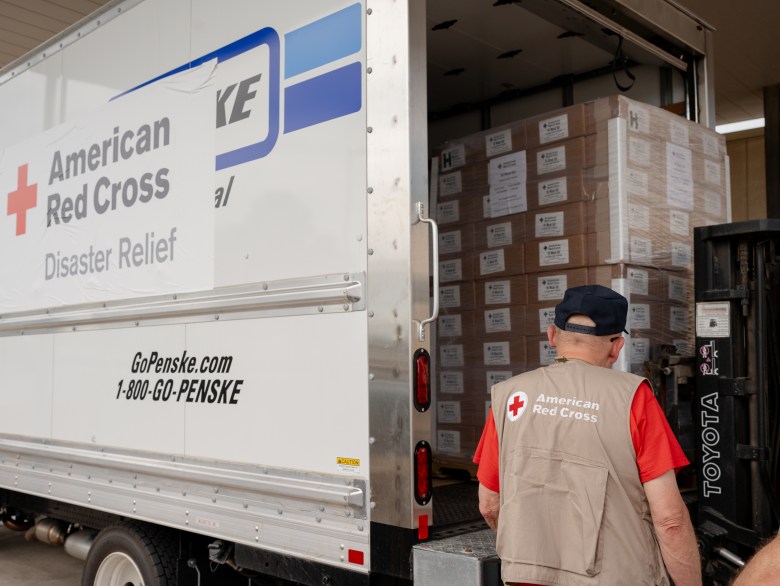- At least 4 dead, hundreds rescued after deadly floods ravage South Texas
- Today on Texas Standard: Deadly floods swamp South Texas, shatter records
- North Carolina radio station was a critical lifeline after Hurricane Helene. Then it became the voice of recovery.
- As storms approach, Rock Hill residents look back on last April's devastating hailstorm
- As storms approach, Rock Hill residents look back on last April's devastating hailstorm
Hurricane Beryl recovery is underway in Southeast Texas. Here’s how you can help.

The Red Cross in San Antonio is seeking volunteers to relieve and support its volunteers who have been in Southeast Texas in the days since Hurricane Beryl walloped the coast with winds that knocked out power for millions along with damaging and fatal flood waters.
Red Cross volunteer recruitment events will be held Saturday and Sunday, from 10 a.m. to 4 p.m. at two locations:
- American Red Cross San Antonio Office, 3642 E Houston St, San Antonio, TX 78219
- Wonderland of the Americas, 4522 Fredericksburg Rd, Balcones Heights, TX 78201
Those interested in volunteering are being asked to attend recruitment events Saturday and Sunday in San Antonio, where they can find a suitable role, including high-needs positions like mass care and disaster health or mental health services.
Positions for all skill levels are available and needed.
According to the Red Cross, mass care volunteers support day-to-day activities, including emergency shelter operations for those displaced by disasters, feeding and distribution of emergency supplies.
Mental and other health service volunteers are needed to use their professional skills as a licensed healthcare provider to deliver hands-on care to people in shelters.
Prolonged power outages
The urgent request comes as the operations center for the disaster relocates from San Antonio to Houston, where more than a million residents remain without power for a fourth day.
Daniel P. Martinez, executive director of the American Red Cross of the Greater San Antonio chapter, told the San Antonio Report on Wednesday that 500 volunteers nationwide have already responded to the effort.
However, “it’s just not enough,” he said. “With the continued loss of power or having to open more shelters, we’re getting more requests every day.”
The power outages and Texas heat combine to create potentially dangerous situations, particularly for vulnerable populations, Martinez said.
Volunteers who have been trained also risk facing fatigue as disasters become more taxing and common.
“If you are asked every other month, hey, there’s another natural disaster, that takes a personal, mental or spiritual … toll on individuals,” he said. “So we have to have a bank of individuals who are trained, ready to get deployed, whether that’s in response to what we anticipate being one of the worst hurricane seasons in this century, whether that’s something like the wildfires that happened in Hawaii, [and more…]”

Other local officials are also headed to the Houston region to help with recovery efforts, including 23 San Antonio police officers who were asked to assist the City of Houston and the Texas Department of Emergency Management with the response to Hurricane Beryl.
The officers will be there through Sunday.
Ways to donate
For those who don’t have the time or capacity to volunteer in person, Martinez said financial donations are also needed, especially with the cost of the storm outpacing initial estimates, which grew from $2 million to $4 million as the early days passed.
“The best way to support us is through making a donation, whether it’s $1 or $1 million, through redcross.org/donate,” he said. “That’s directly going toward impacted individuals for the hurricane relief efforts.”
With a hurricane season that is expected to be busy just getting underway, the resources of the disaster response organization are stretched thinner than ever, he added.
Martinez pointed to statistics shared in a recent state-wide Red Cross call, including the growth of billion-dollar disasters in the U.S. from around three a year in 1980 to 28 in 2023.
“Beryl was the earliest first hurricane to make landfall of the season, and we anticipate this as of right now to be the most disastrous hurricane season that we’ve seen in a century,” he said. “And if you think, this was a category one, I say that both relatively and respectfully.”
Hurricanes that are higher on the Saffir-Simpson Hurricane Wind Scale, which estimates potential property damage and categorizes storms in one of five categories based on wind speed, would likely far outpace the cost of Beryl.
Any Category 3 or above is considered a major hurricane, which “can cause devastating to catastrophic wind damage and significant loss of life simply due to the strength of their winds,” according to the National Weather Service.
How to volunteer locally
Volunteers are also holding down the fort in San Antonio, helping coordinate more resources bound for the impacted area and responding to other local emergencies, like house and apartment fires.
Among them is Mac McNell, the disaster program manager volunteer partner who has been volunteering on and off since 2004.
“It is very important to volunteer, because you are helping people,” he said. “They are going through their worst day … and you are going to give them a little hope.”
That hope could come in the form of a hot meal, a bottle of shampoo or a place to cool down, he said.


As for what volunteering could look like — that could be anything, he said.
“Whenever I get to a disaster I always ask, what do you need me to do?” he said. “I’ll clean toilets if that’s what you need, but I’m qualified for … mass care, sheltering, feedings, logistics, things like that.”
As volunteers worked to load thousands of additional meal kits into a rental truck Thursday morning, McNell hurried off to locate drivers to get them to Houston.
